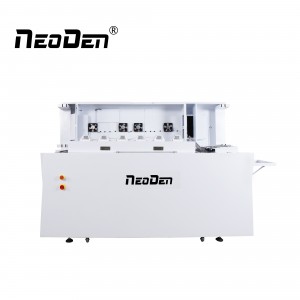I. Background
PCBA welding adopts hot air reflow soldering, which relies on the convection of wind and the conduction of PCB, welding pad and lead wire for heating. Due to the different heat capacity and heating conditions of the pads and pins, the heating temperature of the pads and pins at the same time in the reflow welding heating process is also different. If the temperature difference is relatively large, it may cause poor welding, such as QFP pin open welding, rope suction; Stele setting and displacement of chip components; Shrinkage fracture of BGA solder joint. Similarly, we can solve some problems by changing the heat capacity.
II. Design requirements
1. Design of heat sink pads.
In the welding of heat sink elements, there is a lack of tin in the heat sink pads. This is a typical application that can be improved by heat sink design. For the above situation, can be used to increase the heat capacity of the cooling hole design. Connect the radiating hole to the inner layer connecting the stratum. If the stratum connecting is less than 6 layers, it can isolate the part from the signal layer as the radiating layer, while reducing the aperture size to the minimum available aperture size.
2. The design of high power grounding jack.
In some special product designs, cartridge holes sometimes need to be connected to more than one ground/level surface layer. Because the contact time between the pin and the tin wave when the wave soldering is very short, that is, the welding time is often 2~ 3S, if the heat capacity of the socket is relatively large, the temperature of the lead may not meet the requirements of welding, forming cold welding point. To prevent this from happening, a design called a star-moon hole is often used, where the weld hole is separated from the ground/electrical layer, and a large current is passed through the power hole.
3. Design of BGA solder joint.
Under the conditions of mixing process, there will be a special phenomenon of “shrinkage fracture” caused by unidirectional solidification of solder joints. The fundamental reason for the formation of this defect is the characteristics of mixing process itself, but it can be improved by the optimization design of BGA corner wiring to slow cooling.
According to the experience of PCBA processing, the general shrinkage fracture solder joint is located in the corner of BGA. By increasing the heat capacity of the BGA corner solder joint or reducing the heat conduction velocity, it can synchronize with other solder joints or cool down, so as to avoid the phenomenon of being broken under the BGA warping stress caused by cooling first.
4. Design of chip component pads.
With the smaller and smaller size of chip components, there are more and more phenomena such as shifting, stele setting and turning over. The occurrence of these phenomena is related to many factors, but the thermal design of the pads is a more important aspect. If one end of the welding plate with relatively wide wire connection, on the other side with the narrow wire connection, so the heat on both sides of the conditions are different, generally with wide wire connection pad will melt (that, in contrast to the general thought, always thought and wide wire connection pad because of the large heat capacity and melting, actually wide wire became a heat source, This depends on how the PCBA is heated), and the surface tension generated by the first melted end may also shift or even flip the element.
Therefore, it is generally hoped that the width of the wire connected with the pad should not be greater than half of the length of the side of the connected pad.
NeoDen Reflow oven
Post time: Apr-09-2021

